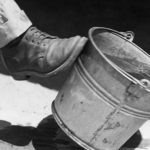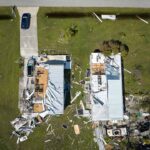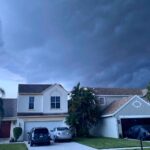Southwest Florida is no stranger to hurricanes.
Many people think that Florida only has one season: summer.
Florida actually has seasons; they’re just different than other states: rainy season, dry season, lovebug season, and hurricane season.
Every year, we brace ourselves for the potential of a major storm hitting our area. While we can’t always predict when or where a hurricane will hit, there are things you can do to prepare yourself and your family in case one does come our way. In this blog post, we’ll talk about some of the things you need to do to get ready for hurricane season in southwest Florida.
When does Hurricane Season start?
Hurricane season starts on June 1st and runs through November 30th.
That means now is the time to start preparing.
Review your homeowners insurance policy and make sure you are fully covered.
The first thing you need to do is make sure you have adequate insurance coverage. You can contact your insurance agent to find out more about what your policy covers and what it doesn’t.
Take a look at your homeowners insurance policy to ensure that you have full coverage. Make sure that you understand what is included in your policy, and what is not covered. If you have any questions, reach out to your insurance agent for clarification. It’s better to be safe than sorry, so take the time to review your policy today.
Understand Your Deductibles
Also understand what your deductibles may be and how much they may cost you.
Your deductible is the amount of money you have to pay out-of-pocket before your insurance company starts to pay for hurricane damage. For example, if your deductible is $1,000 and your hurricane damage totals $5,000, you will only have to pay the first $1,000 and your insurance company will cover the remaining $4,000.
In Florida, most home insurance policies have a 2% hurricane deductible. This means that if your home is insured for $200,000, your hurricane deductible would be $4,000.
Make sure you know how much your hurricane deductible is and set aside enough money to cover it in case you need to file a claim.
Keep in mind that you’ll also have up to 3 years from the date of hurricane landfall to file a claim, so even if you don’t have the money upfront, you can still file a claim a little later on down the road.
It’s important to know what your deductibles are so that you can plan ahead financially in case a major storm hits. If you don’t have enough money saved up to cover your deductibles, now is the time to start setting some aside.
Don’t wait until the last minute…
If you’ve ever attempted to get a new insurance policy or increase your limits on an existing policy in the face of an impending natural disaster, you may have run into something called a binding restriction.
It makes sense, right? Why would an insurance company want to take on any new risks when they know a hurricane is bearing down on their policyholders? The problem is, if you wait until the last minute to try to get insurance, you may not be able to find any at all.

So what can you do? The best thing to do is to review your insurance coverage at the start of hurricane season. If you need to make any changes or purchase a new policy, do it now, before the rush.
It’s also a good idea to have an emergency fund set aside to cover any deductibles or out-of-pocket expenses that your insurance doesn’t cover.
Insurance companies sometimes put a temporary moratorium on binding new policies or increasing limits in existing ones during times of high risk, in order to avoid having to pay out too much in claims.
After the threat has passed, the binding restriction is lifted and you can bind your policy as usual.
Flood insurance is different from home insurance.
When most people in Florida purchase homeowners insurance, they mistakenly believe that their policy will cover any and all types of weather damage.
Flooding is not covered by standard homeowners insurance policies. In order to be protected from flood damage, you must purchase a separate flood insurance policy.
In Florida, pretty much everywhere is a flood zone. So, if you own a home here, you’ll very likely need a flood insurance policy.
That’s why it’s so important to understand what your policy covers – and doesn’t cover – before you have to file a claim. Otherwise, you could be in for a nasty surprise if your home is damaged by a flood or other type of weather event.
So, if you’re not sure what your homeowners insurance policy covers, be sure to ask your agent. They’ll be happy to answer any questions you have and help you understand exactly what you’re paying for.
Don’t wait to get homeowners insurance or flood insurance.
If you don’t have a policy in place, call your insurance agent today. A homeowner’s policy can be written and bound within hours, and a flood policy can be written as quickly. However, all NFIP flood policies have a 30-day waiting period after payment has been made before it goes into effect. Private Market Flood policies often have a shorter waiting period of 10 days or less, or no waiting period at all.
Purchase supplies like food, water, batteries, and first-aid kits.
You’ll want to purchase supplies like food, water, batteries, and first-aid kits. These items will ensure that you’re prepared in the event of an emergency.
You may also want to invest in a generator. A generator can be a lifesaver if you lose power during a storm.
If you have any special needs, be sure to stock up on supplies that will help you care for those needs. For example, if you have diabetes, you’ll want to make sure you have enough insulin on hand.
The bottom line is this: don’t wait until a hurricane is bearing down on Florida to start preparing. By then, it may be too late. Start making preparations now so that you can rest easy knowing that you and your family are as safe as possible when the next hurricane season rolls around.
Understand the Saffir-Simpson Hurricane scale
The Saffir-Simpson Hurricane Scale is a 1-5 rating system based on a storm’s intensity. The categories may change as the hurricane strengthens or weakens during the course of the storm. The scale was developed in 1971 by Herbert Saffir, a civil engineer, and Robert Simpson, the director of the National Hurricane Center. The scale is used to help people understand the potential damage that a hurricane could cause.
- Category 1 hurricanes are considered “minimal” storms, with wind speeds between 74 and 95 mph. These storms can cause some damage to buildings, trees, and power lines.
- Category 2 hurricanes have wind speeds of 96-110 mph and can cause significant damage to roofs, windows, and doors. These storms can also uproot trees and cause power outages.
- Category 3 hurricanes have wind speeds of 111-129 mph and can cause extensive damage to buildings, trees, and power lines. These storms can also flooding and storm surge.
- Category 4 hurricanes have wind speeds of 130-156 mph and can cause catastrophic damage to buildings, trees, and power lines. These storms can also cause severe flooding and storm surge.
- Category 5 hurricanes have wind speeds of 157 mph or higher and can cause catastrophic damage to buildings, trees, power lines, and infrastructure. These storms can also cause severe flooding and storm surge.
If you know the different categories of hurricanes, you can better understand the potential damage that a hurricane could cause. Be sure to take the necessary steps to protect your home and property in the event of a hurricane.

Trim trees and branches that could fall on your house in a storm.
Trim back any trees or branches that could potentially fall on your house during a storm. Not only will this help protect your home, but it could also prevent serious damage or injuries.
Take a walk around your property and take note of any trees or branches that appear to be close to your home. If you have any concerns, trim them back to help avoid any problems during a severe storm.
Having a lot of trees around your house can increase the chances that one will fall on your home during a storm, so trimming them back can help to reduce this risk. In addition, if there is a major storm or hurricane, trimming trees can also help to reduce the damage that they can cause. While it may seem like a lot of work, taking these steps can help to protect your home and give you peace of mind in knowing that you are prepared for whatever Mother Nature might throw your way.
Stay informed about the latest weather forecasts and evacuation orders.
The best way to stay safe during a natural disaster is to be prepared. Stay informed about the latest weather forecasts and evacuation orders. That way, you can be sure you and your loved ones are safe and sound.
Do you know your evacuation zone?
Lee County has 5 different evacuation zones, which are determined by the amount of predicted storm surge and wind. These zones are named by letter, with “A” being the most at-risk and “E” being the least at-risk. In the event of a hurricane, evacuation orders will be given in a phased manner, starting with Zone A.
You can find out which evacuation zone your home is in by looking on the Lee County website.
Being aware of your evacuation zone is an important part of hurricane preparedness. If you live in an area that is at risk for storm surge or high winds, it is important to know your evacuation route and plan ahead of time.
This means that even if you don’t see any effects of the tropical storm yet, you may still be ordered to evacuate. It’s important to know your zone so that you can be prepared in the event of a hurricane.
Plan ahead and know what to do if a hurricane is headed your way.
If a hurricane is headed your way, it’s important to plan ahead and know what to do. Make sure you have a safe place to stay, enough food and water, and a plan for how to stay in touch with your loved ones.
Hurricanes can be deadly and destructive storms, but by being informed and taking some precautions, you can minimize the risks to your home and family. Make sure you have a homeowners insurance policy that will fully cover you in case of damage, stay up-to-date on the latest weather forecasts and evacuation orders, and know your evacuation zone. If a hurricane is headed your way, make sure you have a plan for what to do and where to go. Stay calm and don’t panic – with a bit of preparation, you can ride out even the strongest storm.







